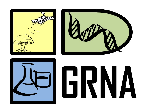Banca de DEFESA: ADCLÉIA PEREIRA PIRES
Uma banca de DEFESA de MESTRADO foi cadastrada pelo programa.STUDENT : ADCLÉIA PEREIRA PIRES
DATE: 11/11/2022
TIME: 09:00
LOCAL: Miniauditório da reitoria, Sala 447 - BMT2 / Campus Tapajós
TITLE:
Pollen spectrum of honey from native bees reared in meliponary in an urban area of Belterra, state of
Pará, Amazon, Brazil
KEY WORDS:
meliponiculture; palynology; honey plants; pollen; seasonality.
PAGES: 91
BIG AREA: Outra
AREA: Ciências Ambientais
SUMMARY:
This study aimed to identify the pollen resources found in honey spectrum of six Amazonian stingless bee species: Scaptotrigona aff. xanthotricha, Scaptotrigona polystica, Tetragona clavipes, Tetragonisca angustula, Melipona seminigra, Friseomelitta longipes in a meliponary in the urban area of Belterra, Low Amazonas (state of Pará, Brazil). Twelve honey samples were collected, six in May and six in October 2021. After acetolysis, 70 pollen types were identified, distributed in 22 families, 52 genera and five undetermined types. The total number of sources used by bees were: Scaptotrigona polystica (37), Tetragona clavipes (26), Friseomelitta longipes (28), Scaptotrigona aff. Xanthotricha (24), Tetragonisca angustula (19) and Melipona seminigra (19). Tetragona clavipes diversified most visits to pollen sources and collected a greater number of pollen types. The most visited plant families regarding the number of pollen types were Fabaceae (23%), Myrtaceae (14%), Anacardiaceae (12%), Melastomataceae (9%), Malphiguiaceae (8%), Euphorbiaceae (8%), Rubiaceae (8%), Arecaceae (3%), Malvaceae (3%) and Sapindaceae (1%). Of the 70 pollen types determined, ten presented a frequency greater than 3% and totaled 47% pollen found in honey for the species of bees, where the main genera were Borreria (8%), Byrsonima (8%), Miconia (7%), Tapirira guianensis (7%), Spondias mombin (4%), Croton (4%), Sclerolobium hypoleucum (3%), Chamaecrista (3%), Myrtaceae 1 (3%) and Eugenia (3%). The use of pollen sources varied according to the species; Tetragona clavipes showed a broader and more diversified diet, while Melipona seminingra had the least diversified diet. The bees collected 90 pollen types in the rainy season (May) and 102 types in the less rainy season (October).
COMMITTEE MEMBERS:
Externa à Instituição - JULIANA DO NASCIMENTO BENDINI - UFPI
Externa à Instituição - LUCIETA GUERREIRO MARTORANO - EMBRAPA
Presidente - 1217126 - ROSA HELENA VERAS MOURAO
Interna - ***.678.013-** - VALÉRIA MOURÃO DE MOURA - UEA




